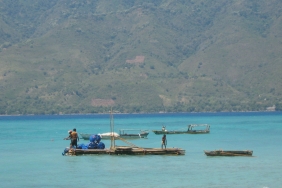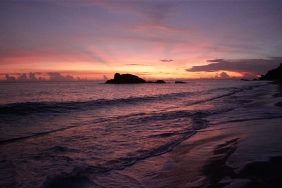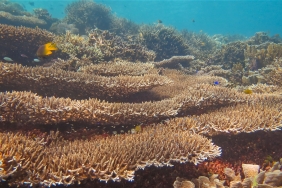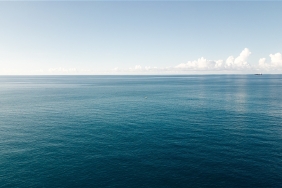DSCP INDONESIA CONDUCTS TRAINING ON SURVEY AND MONITORING METHODS FOR DUGONG AND SEAGRASS HABITATS
Author: Sheyka Nugrahani F. (Marine Species Conservation Assistant) and Casandra Tania (Marine Species Officer)
Dugong (Dugong dugon) or dugong is one of 35 species of marine mammals found scattered in Indonesian waters. This animal, which is often found in seagrass habitats, is protected under Government Regulation No. 7 of 1999. Dugong is also a priority of the Ministry of Marine Affairs and Fisheries (KKP) of the Republic of Indonesia. In the eyes of the world, the dugong is included in the IUCN (the International Union on Conservation of Nature) Red List as "vulnerable to extinction", as well as included in Appendix I of CITES (the Convention on International Trade in Endangered Species of Wild Fauna and Flora). This means that dugongs are fully protected and cannot be traded in any form.
In August - October 2016, various methods in the draft protocol for monitoring dugong and seagrass habitat were used in preliminary survey activities in Bintan, Tolitoli, West Kotawaringin, and Alor. Some of the data and information that has been collected during the survey still requires further analysis and processing.
DSCP (Dugong and Seagrass Conservation Project - DSCP) Indonesia invites academics, researchers, and practitioners focusing on dugong and seagrass habitat conservation to participate in the "Training on Survey and Monitoring Methods for Dugong and Seagrass Habitat". This training activity will be held in Jakarta on January 30 - February 1, 2017, and in Tolitoli on February 3 - 5, 2017.
Through the "Training on Survey and Monitoring Methods for Dugong and Seagrass Habitat" activity, DSCP Indonesia hopes that participants can learn from each other, as well as share knowledge and experience during surveys, or also when analyzing and processing data further. The survey and monitoring methods that will be applied have been tested and will be used as a standard for monitoring surveys of dugong and seagrass habitats in Indonesia.
In the "Training on Survey and Monitoring Methods for Dugong and Seagrass Habitat" activity, various materials related to survey and monitoring of dugong and seagrass habitat will be taught by trainers, both from Indonesia and abroad, including Prof. Dr. Hans de Iong (Leiden University). Hans de Iong (Leiden University); Kotaro Ichikawa (Kyoto University); Nicholas Pilcher (Marine Research Foundation, Malaysia); Irendra Rajawali (Bonn University); Christophe Cleguer (James Cook University); Prof. Sam Wouythuzen, Prof. Dr. Irendra Rajawali (Bonn University). Sam Wouythuzen, Wawan Kiswara, Sekar Mira, and Nurul Dhewani (P2O LIPI); Andreas Hutahaean and Agustin Rustam (P3SDLP - KKP); Adriani Sunuddin and Luky Adrianto (IPB); and Dwi Suprapti (WWF-Indonesia). Topics covered by the trainers included databases, bioacoustics, community-based monitoring, aerial surveys, seagrass ecosystem services, and handling stranded marine mammals.
Let's keep up with the latest news about this training activity on the fanpage DSCP Indonesia page. For more information about the training activities, contact Sheyka (082 111 777 492).
About Dugong and Seagrass Conservation Project (DSCP) Indonesia:
Since 2016, a collaboration between the Ministry of Maritime Affairs and Fisheries (MMAF), the Indonesian Institute of Sciences (LIPI), Bogor Agricultural University (IPB), and WWF-Indonesia was formed under the name Dugong and Seagrass Habitat Conservation Project (DSCP) Indonesia. This collaboration is supported by the United Nations Environment Programme-Conservation Migratory Species (UNEP-CMS) in collaboration with the Mohamed bin Zayed Species Conservation Fund (MbZ). DSCP Indonesia has several locations that are the focus of its activities, including Bintan, Riau Islands; Tolitoli, Central Sulawesi; West Kotawaringin, Central Kalimantan; and Alor, East Nusa Tenggara. The first activity held by DSCP Indonesia was the "National Symposium on Dugong and Seagrass Habitat" in April 2016. The first national symposium aimed to collect data and information that has not been well documented about dugong and seagrass habitats, as well as to draft monitoring protocols for these two marine biota.





